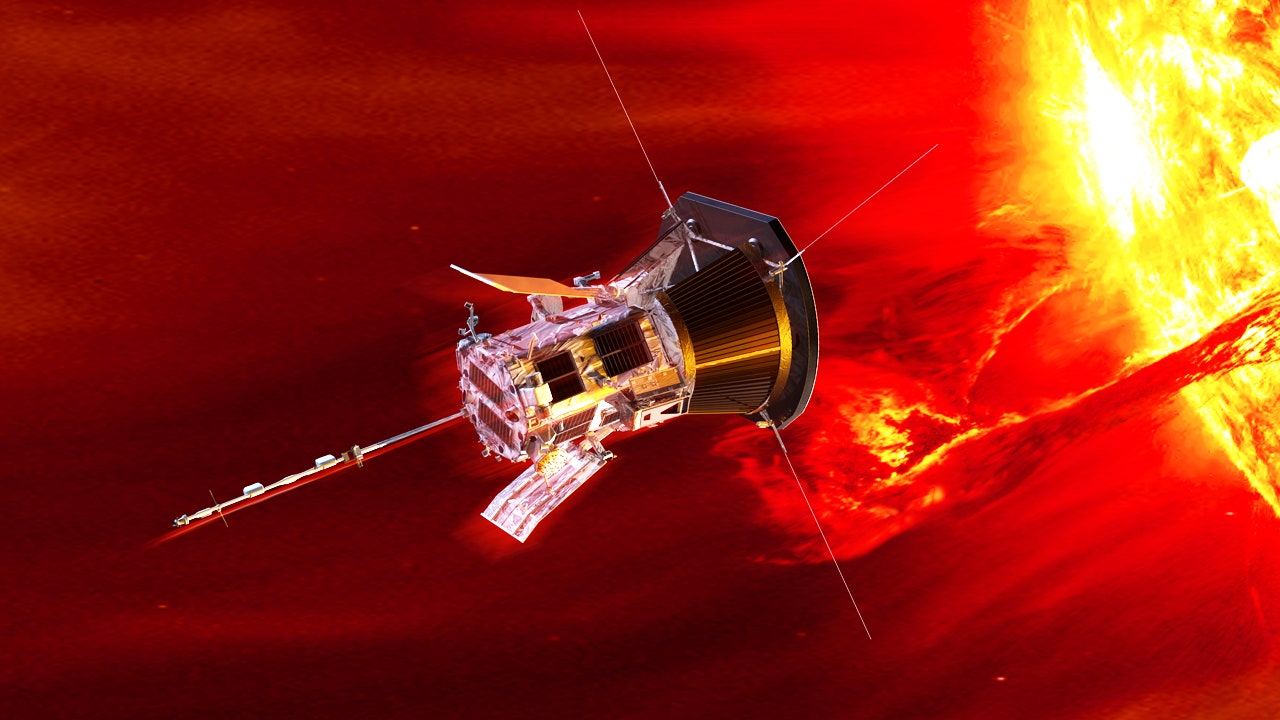The Parker Solar Probe (PSP), a spacecraft that plunged into the atmosphere of the Sun at high speed, has detected a potential source of powerful plasma eruptions in the fast solar wind.

The solar wind, which is located far from the Sun, is turbulent plasma. However, when NASA’s Parker probe approached a distance of about 8 million km from the Sun’s surface, it discovered narrow streams of plasma there. These streams appear to be guided by magnetic fields, leading to the formation of two relatively cool regions in the solar atmosphere known as coronal holes. This is reported by researchers in the Nature journal.
The solar wind is a stream of charged particles that emanate from the Sun. It has two different speeds: “slow” and “fast.” The slow wind has been relatively well-studied, but until now, it was unclear what accelerates the fast solar wind. Most of the plasma in the solar wind consists of protons, electrons, and atomic nuclei moving at speeds of hundreds of kilometers per second. However, the plasma from the region above the coronal holes can move more than ten times faster.
How high-speed solar wind effects Earth
The fast plasma streams are associated with events called reconnections, where parts of magnetic fields around the Sun change their direction. Reconnections can occur when magnetic loops near the Sun’s surface merge with long magnetic field lines originating from the Sun. Reconnection results in a sudden release that propels plasma into space when the bend straightens. Researchers believe that the higher energy streams are a consequence of recently connected magnetic field lines with sharp bends, while the lower energy streams originate from magnetic lines with older, less pronounced bends.
According to astrophysicist Stuart Bale from the University of California, Berkeley, “Our findings suggest that the solar wind can be accelerated to high speeds very close to the Sun. This differs slightly from the standard scenario of wind energy utilization, where acceleration occurs far from the Sun.”
Understanding such processes like the origin of the fast solar wind is important from a practical perspective. Solar flares and space weather they create can disrupt power grids on Earth, interrupt radio communication, and pose a threat to astronauts.
The key to unraveling the mystery
The obtained data is a crucial key to the enduring mystery of why the Sun’s atmosphere is millions of degrees hotter than its surface. Another interesting aspect of the study is how the structure of the solar surface is reflected in the solar wind near the Sun, despite the presence of turbulence, says astrophysicist Amitava Bhattacharjee from Princeton University. According to him, other researchers have speculated that this could happen, but in the new study, the experimental and simulation evidence is more convincing.
Future encounters of the PSP spacecraft with the Sun may finally confirm the source of the fast solar wind. Further probing will take place as the Sun enters a phase of increasing sunspots and more solar wind, approaching the peak of solar activity in July 2025.
So, the research conducted by the Parker Solar Probe indicates that the fast solar wind may be associated with magnetic connections and bends in the Sun’s magnetic field. This discovery is important for understanding the nature of the solar wind and studying the processes occurring in the Sun’s atmosphere. Further research will be conducted to provide a more complete picture of these processes and their impact on space weather and technology on Earth.
Earlier, we reported on how the Parker probe’s heat shield received a puncture at a speed of 644,000 km/h.
Based on materials from Science News.
